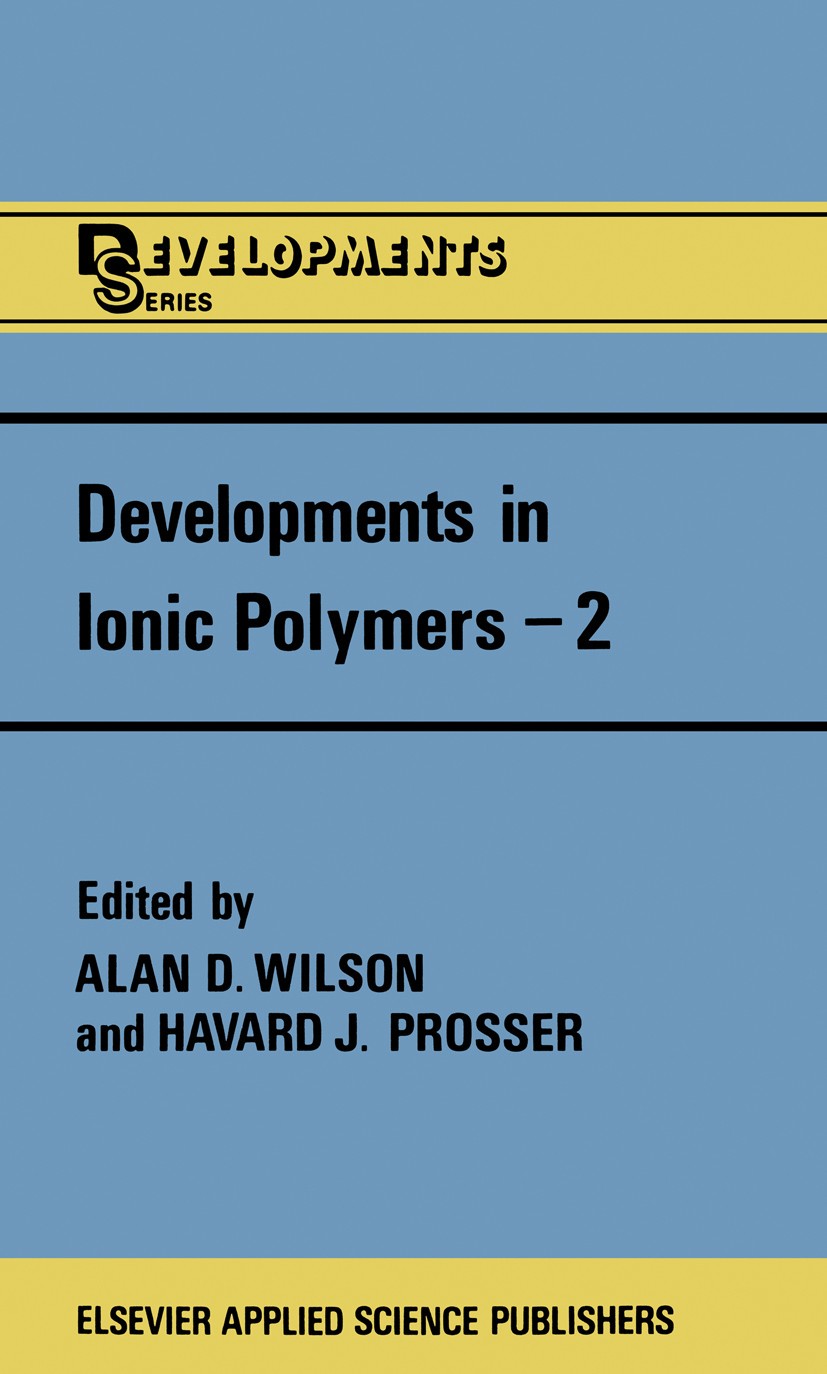| 书目名称 | Developments in Ionic Polymers—2 | | 编辑 | Alan D. Wilson,Havard J. Prosser | | 视频video | http://file.papertrans.cn/271/270219/270219.mp4 | | 图书封面 |  | | 描述 | Ionic polymers, like elephants, are easier to recognise than to define. Several methods of classification have been attempted but none is wholly satisfactory because of the extreme diversity of ionic polymers, which range from the organic, water-soluble polyelectrolytes, through hydrogels and ionomer carboxylate rubbers, to the almost infusible inorganic silicate minerals. For this reason, a general classification is not only difficult, but has minimal utility. However, there are some characteristics of these materials that should be highlighted. The role of counterions is the significant one. These ions, either singly or as clusters, take part in the formation of ionic bonds which have a varying structural role. Often they act as crosslinks, but in the halato-polymers the ionic bonds form an integral part of the polymer backbone itself. Conversely, in polymers contain ing covalent crosslinks, such as the ion-exchange resins, the coun terions have virtually no structural role to play, since they dwell in cage-like structures without affecting the crosslinking, and are readily exchanged. They are, perhaps, best described as ion-containing polymers rather than structural ionic poly | | 出版日期 | Book 1986 | | 关键词 | Elastomer; Ionomer; hydrogel; macromolecule; polyelectrolyte; polymer; polymers | | 版次 | 1 | | doi | https://doi.org/10.1007/978-94-009-4187-8 | | isbn_softcover | 978-94-010-8360-7 | | isbn_ebook | 978-94-009-4187-8 | | copyright | Elsevier Applied Science Publishers LTD and Imperial Chemical Industries PLC 1986 |
The information of publication is updating

|
|
 |Archiver|手机版|小黑屋|
派博传思国际
( 京公网安备110108008328)
GMT+8, 2025-11-3 18:06
|Archiver|手机版|小黑屋|
派博传思国际
( 京公网安备110108008328)
GMT+8, 2025-11-3 18:06


